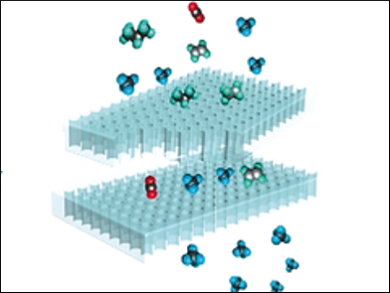The development of carbon adsorbents with precisely controlled micropore sizes could be useful for energy-efficient gas separations under harsh conditions. Porous carbons generally feature a wide distribution of micropores derived from randomly orientated graphitic domains.
An-Hui Lu, Dalian University of Technology, China, have developed a thermoregulated phase-transition method for the selective synthesis of flat and self-standing carbon nanoplates with uniform ultramicropores. The team liquefied stearic acid (SA) at 80 °C and dispersed it into an aqueous solution together with a surfactant to form a uniform microemulsion. This emulsion was then cooled to 28 °C, which caused a phase transition and gave a suspension of SA sheets. These sheets were used to guide the formation of polymer nanoplates, which were transformed to the desired 2D carbon nanoplates using pyrolysis.
The carbon nanoplates consist of over 80 % sp2 carbon and their thickness can be controlled. Such a thin structure allows the well-organized growth of graphitic domains that have an almost parallel orientation and selectively create uniformly sized micropores. The carbon nanoplates exhibit high adsorption capacity, high selectivity, and fast sorption kinetics for gas separation. According to the researchers, the developed approach could provide a new route for the design and synthesis of new 2D materials.
- Thermoregulated Phase-Transition Synthesis of Two-Dimensional Carbon Nanoplates Rich in sp2 Carbon and Unimodal Ultramicropores for Kinetic Gas Separation,
Lu-Hua Zhang, Wen-Cui Li, Hong Liu, Quan-Gao Wang, Lei Tang, Qing-Tao Hu, Wen-Jing Xu, Wei-Hong Qiao, Zhong-Yuan Lu, An-Hui Lu,
Angew. Chem. Int. Ed. 2018, 57, 1632–1635.
https://doi.org/10.1002/anie.201712913



